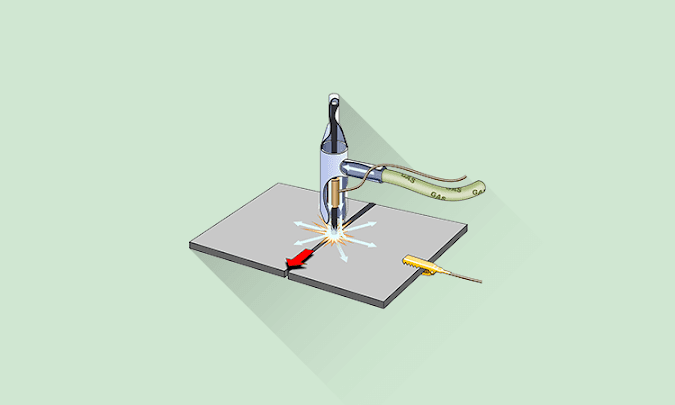Applications, Advantages and Disadvantages of MIG Welding
🔗MIG welding process, Basic components and Process variables
Applications of MIG Welding
MIG welding is extensively utilized across various industry sectors and is responsible for depositing over 50% of all weld metal. Compared to Manual Metal Arc welding (MMA), MIG welding offers distinct advantages in flexibility, deposition rates, and suitability for mechanization. However, it is essential to note that while MIG welding is ideal for precise metal deposition, it demands a high degree of manipulative skill from the welding operator.
The MIG welding method offers great versatility as it can be used to weld practically all commercially available metals. Carbon steel, silicon steel, low alloy steels, stainless steel, aluminium, magnesium, copper, nickel, and their alloys can all be successfully welded using MIG welding. Its applications span across industries such as aircraft manufacturing, automobile production, pressure vessel construction, and shipbuilding.
MIG welding is well-suited for general fabrication tasks due to its superior efficiency and speed.
MIG welding is suitable for deep groove welding of plates and castings, similar to the submerged arc process. However, it offers distinct advantages when working with light gauge metals, as it allows for higher speeds and offers greater efficiency.
MIG welding is well-suited for welding tool steels and dies.
It is a preferred method for most types of sheet metal welding.
MIG welding finds application in the manufacturing of refrigerator parts.
🔗What are the advantages and disadvantages of welding joints?
Advantages and Disadvantages of MIG Welding
Advantages Of MIG Welding
1. MIG welding offers simplicity, versatility, and cost-effectiveness, providing greater flexibility in operation.
2. It enables the welding of non-ferrous and soft metals, expanding its applicability to a broader range of materials.
3. MIG welding provides higher deposition rates.
4. The use of inert gases in MIG welding shields the metal from the atmosphere, reducing the risk of oxidation and ensuring cleaner welds.
5. Welds produced through MIG welding exhibit improved quality, characterized by better integrity and appearance.
6. MIG welding operates at high speeds, enabling swift completion of welding projects.
7. It offers the potential for deeper penetration into the base metal, enhancing joint strength.
8. MIG welding, devoid of flux usage, results in smooth, neat, clean, and spatter-free welded surfaces.
9. The absence of slag formation simplifies the welding process and eliminates the need for post-weld cleaning.
10. The weld metal produced in MIG welding has low hydrogen content, reducing the risk of hydrogen-induced cracking (HIC).
11. MIG welding can be easily automated, allowing for efficient and consistent welding in automated systems.
12. Compared to shielded metal-arc welding, MIG welding is faster due to the continuous feeding of filler metal, enhancing productivity.
13. MIG welding is particularly suitable for welding thin sheets.
14. MIG welding is applicable in all positions, providing versatility and convenience for welding projects in various orientations.
Disadvantages of MIG Welding
1. MIG welding can be more complex than other welding methods, requiring a higher level of expertise and understanding.
2. The equipment used in MIG welding tends to be more complex, costly, and less portable, which can limit its accessibility in certain situations.
3. Continuous consumption of electrodes in MIG welding adds to the overall cost of the process.
4. MIG welding may be less adaptable for welding in hard-to-reach areas or confined spaces, posing challenges in certain welding applications.
5. Strong winds can blow away the gas shield in MIG welding, making it less suitable for outdoor work where a consistent gas shield is essential.
6. Cooling the welding gun may be necessary in MIG welding, as the high current can generate significant heat that may require additional measures to prevent overheating.
7. Achieving complete automation in MIG welding can be difficult, limiting the extent to which the process can be fully mechanized.
8. MIG welding demands highly skilled labour due to its intricacies and the need for precise control, which can increase labour requirements and costs.


